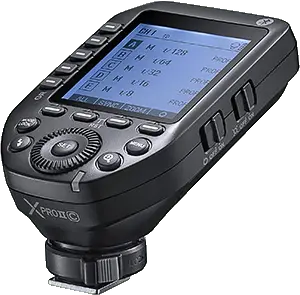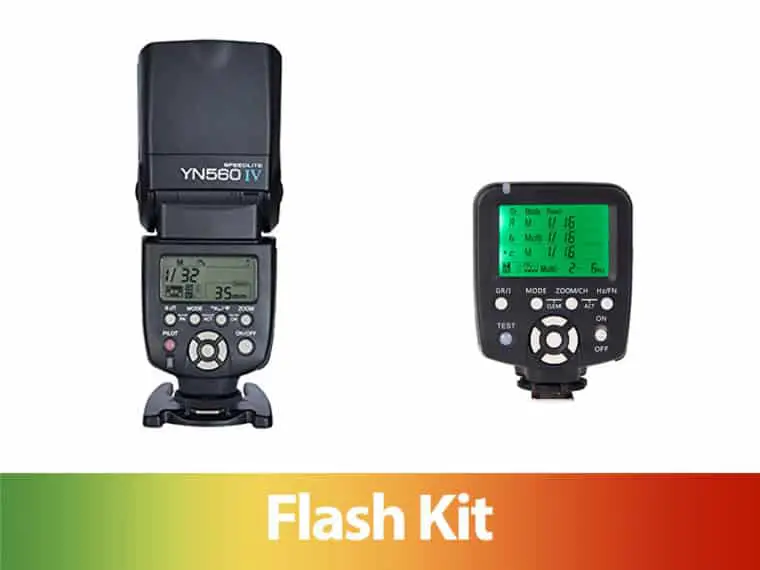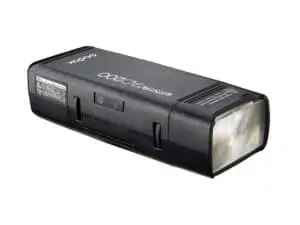It may seem daunting, I know it did to me, but besides training and good lenses flash is the thing that has most improved my photography over the years. The only regret I have with regard to flash is not giving it a try earlier. You can do this, and this is the gear that will help you get there.
The most basic but fully functional flash kit for a beginner and hobbyist is a Godox TT600 flash and the Godox XPro II flash controller.
Flash, Speedlight, or Strobe?
Before you get into my recommendation for a flash, let’s quickly go over terms you are going to hear a lot as a photographer. When talking about adding artificial lighting to the scene you are photographing some call the device a flash, others a speedlight (sometimes spelled speedlite), some a strobe.
The terms “flash” and “speedlight” are generally synonymous. They mean the same thing. Usually flash or speedlight means a small and portable device that runs on batteries (usually AA) that can be triggered to very quickly emit a bright flash of light as you press the shutter button. After emitting that intense burst of light, the flash/speedlight has to get charged by the batteries before it can be fired again (called “recycling”). The more powerful the burst of light the flash is configured to emit, the longer that recycle time is with each press of the shutter.
The term “strobe” is usually something pretty different. A strobe is usually a device that (most of the time) plugs into the wall and is used in studios. Because they have a stronger power source they charge far more quickly than a flash/speedlight (the “recycle” time is nearly instant). They usually have more advanced features like a “model light” to help the photographer more easily envision the effect of the light on a person.
Beginners should start with a flash and not a strobe. There is a significant cost difference between the two and a flash setup will be more easily applied to any type of photography where you want to add your own light over a strobe. Once you get used to using a flash, if it is something you really enjoy doing with your photography, you will know enough about what you want to invest in a strobe setup.
Best Value/Beginner Flash

You certainly can spend a lot of money on flash equipment. Canon offers flashes between $250 and $600 for a single unit! Same for Nikon. That is a lot of money to spend on something you are just learning to use. Good thing you have found this website and have far more practical choices that still deliver excellent results and are plenty to learn with.
I am using the fantastic Godox TT600 flash. At about $65 a piece you can buy 4 of these flashes for less than the price of a single Canon or Nikon flash, and you really aren’t giving up much in the way of functionality.
The biggest con you are likely to hear about these Godox flashes is that they do not support “automated” flash modes. Canon calls theirs E-TTL. Nikon calls theirs i-TTL (because we can’t call the same thing by the same name). Sort of like shutter priority or aperture priority semi-automatic camera modes, it is a way for your camera to make an educated guess on what the flash power should be set to based on the light meter inside your camera body.

Is the lack of support for automated flash power settings a big deal? Not to me. I really like to have full control over the settings on my camera and it is no different for me with my flashes. I don’t want the camera making a decision on the power of the flash based on the light meter inside the camera. I want the flash power in the shot to remain constant until I decide to change it.
You will also want to get a Godox XPro II controller. This controller mounts to the hotshoe of your camera and enables you to use the flash off the camera. Using a flash this way is often called “off camera flash” or OCF, and this is how you will want to use the flash most of the time. It produces much more flattering light for portraits plus it allows you to place it closer to the model so that you don’t have to turn the power up as high and can get faster recycle times.
You need to buy the XPro II controller specific to your camera body because it supports an advanced features called High Speed Sync (incredible for it to be there for such a low cost!). Godox offers them for Canon, Nikon, Sony, Olympus/Panasonic, Fuji.
Serious Hobbyist Flash
Honestly, a serious hobbyist is not going to be very limited with the Godox TT600 and XPro setup above. Even if you are down the path a ways on photography but haven’t yet ventured into flash, start out with the setup above. It is the best value for your money and you will be able to put a serious dent in the learning curve to figure out how to control the lighting yourself.
If you are here because you are looking for a flash with more functionality at a more expensive but reasonable price, I highly recommend the Godox AD200 Flash Strobe. That’s right, this device is kind of a combination of a flash and a strobe. It opens up more possibilities to play with artificial light than the TT600.
They are significantly more money at about $300 a piece, but you can still get two of them for the price of a single name brand flash and they are far more portable than an actual strobe. Kind of the best of the flash and strobe worlds at a very reasonable price.
The AD200 use must stronger rechargeable lithium ion batteries. This allows the AD200 to offer about 3x (1.5EV) “brighter” (flashes make things brighter by being for longer periods of time) bursts of light AND recycle significantly faster than the TT600.
The AD200 also offers in interchangeable head. You can choose between a fersnel head (the square head like on the TT600) and an omni-directional bulb head that does a much better job of filling a big modifier like a softbox with even light. I love my AD200 flash-strobes!
Professional Speedlights
One of the best things about starting out with the Godox system is the room for growth. You can start out with the TT600, learn how to use artificial light to improve your photography, then up your game by adding AD200 lights and use them all together. If you feel like you need a little more power than the AD200 can provide, something you may need if you frequently work in really bright conditions like a mid-day sun, you can step it up again to the AD600.

The AD600 is 2x (1EV) more powerful than the AD200, giving your more power to overcome the sun and more flexibility to use High Speed Sync. It is also nearly 2x the cost at about $550.


